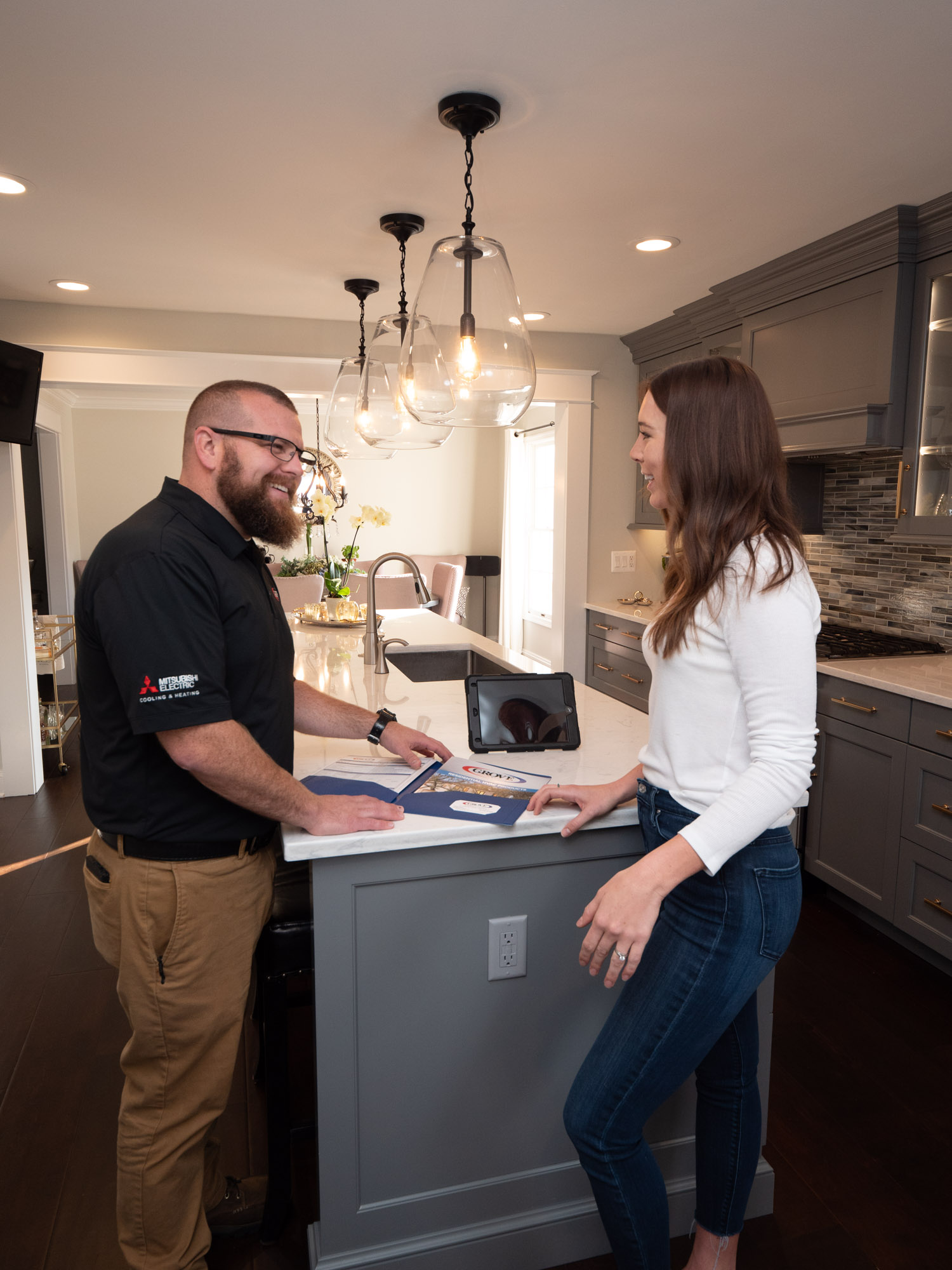When your air conditioner starts acting strangely—blowing warm air, making odd noises, or refusing to turn on—it’s easy to assume the worst. But not every AC issue means you need professional repairs. Sometimes, the solution is as simple as adjusting the thermostat, cleaning a clogged filter, or checking a tripped circuit breaker.
At Grove Heating & Cooling, we know that a little troubleshooting can go a long way in getting your system back up and running without the hassle of a service call. We’ve put together this guide to help Arnold homeowners diagnose and fix common air conditioning problems.
If these quick fixes don’t do the trick, you’ll know it’s time to call in the experts. Let’s take a look at what you can do before reaching for the phone and calling us for AC repair in Arnold, MD.

The first thing to check when your AC stops working is the thermostat.
Before assuming there’s a major issue, make sure your thermostat is set to “cool” and that the temperature is set lower than the current room temperature. Sometimes, settings can be accidentally changed, or the batteries in a battery-operated thermostat may be dead.
If the thermostat seems fine, the next quick check is your circuit breaker. A tripped breaker can shut down your AC unit, especially if there was a recent power surge. If the breaker is off, reset it and see if your AC kicks back on.
If your thermostat is set correctly and your circuit breaker isn’t tripped, but your AC still won’t work, don’t worry—there are a few more things to check before calling for repairs. Follow these troubleshooting steps to see if you can get your system running again.
A dirty or clogged air filter can restrict airflow, causing your AC to work inefficiently or even shut down. Locate your air filter (usually in the return vent or inside the air handler), and if it’s covered in dust and debris, replace it with a clean one. For best performance, filters should be changed every 1–3 months.
Head outside and take a look at your condenser unit (the big metal box outside your home). If it’s covered in leaves, dirt, or other debris, it may not be able to properly release heat, which can cause your AC to stop cooling. Gently clear away any obstructions and hose down the coils to remove dirt buildup.
If your AC isn’t turning on, the problem could be a blown fuse in the disconnect box near the outdoor condenser unit. These fuses help protect your system from power surges and can wear out over time.
How do you tell if your AC fuses are blown? Follow these steps:
If you suspect a blown fuse but don’t have a multimeter, you can also replace both fuses with new ones of the same type and rating to see if that fixes the issue. However, if the new fuses blow again right away, this indicates a deeper electrical problem that requires professional repair.
If you’re unsure about checking or replacing the fuses yourself, Grove Heating & Cooling is here to help! Our technicians in Arnold can safely diagnose and fix any electrical issues with your AC system. Give us a call to schedule a service appointment.
If your AC has been running but isn’t blowing cold air, check for ice buildup on the indoor evaporator coil (located inside the air handler). A frozen coil can be caused by restricted airflow or a refrigerant issue. If you see ice, turn off the AC and let it thaw completely before turning it back on. If it freezes up again, you need to call us for AC repair so we can find and fix the underlying issue.
Blocked or closed air vents can create airflow problems, making it seem like your AC isn’t working properly. Walk through your home and ensure all supply and return vents are open and free of obstructions like furniture, rugs, or curtains.
Your air conditioner removes humidity from the air, and the condensation drains through a small pipe (the AC drain line). If this line becomes clogged with algae or debris, it can trigger a safety switch that shuts off your AC.
To check and clear the drain line, follow these steps:
After going through these troubleshooting steps, try turning your AC back on. If it starts working again, great! If not, there could be a deeper issue that requires a professional technician.
Troubleshooting your AC can often save you time and money by resolving simple issues like thermostat settings, clogged filters, or blocked drain lines. But if you’ve gone through these steps and your air conditioner still isn’t working, it’s time to call in the professionals.
Continuing to run a malfunctioning system can cause more damage, so the best thing to do is turn off your AC and contact Grove Heating & Cooling. Our expert technicians in Arnold are ready to diagnose and repair the issue, so your home stays cool and comfortable. Give us a call today for AC repair in Arnold, MD!
